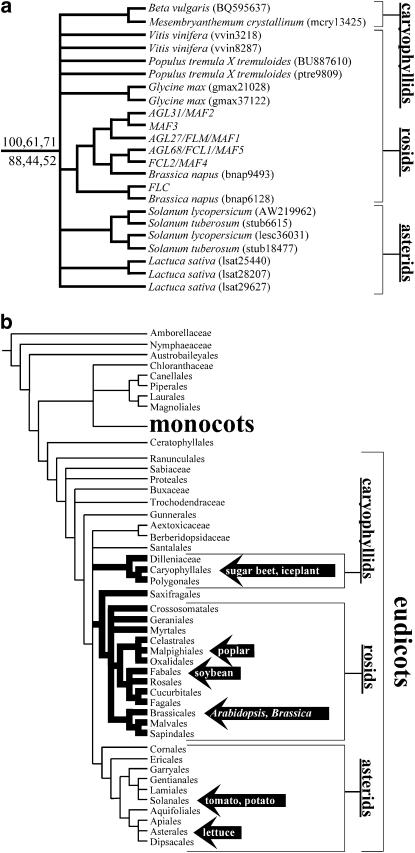Figure 4.—
(a) Strict consensus subtree showing the FLC-like gene subfamily. Support values (Bayesian posterior probability, maximum-parsimony bootstrap percentage, neighbor-joining bootstrap percentage) are indicated for the node that distinguishes the FLC-like subfamily from all other MADS-box gene lineages. Upper values were obtained from a global amino acid sequence alignment (ClustalX); lower values were from a local alignment (DIALIGN-T). GenBank accession numbers or Phytome unipeptide IDs are in parentheses. The presence of sequences from the caryophyllid, rosid, and asterid lineages suggests a core eudicot distribution of FLC homologs. (b) Phylogenetic relationships of angiosperms according to the Angiosperm Phylogeny Group (2003) and Judd and Olmstead (2004). Based on evidence from sugar beet and Arabidopsis, the predicted taxonomic distribution of vernalization-responsive FLC-like repressors of flowering is shown with thick branches. Arrows indicate taxa where FLC homologs were found.

